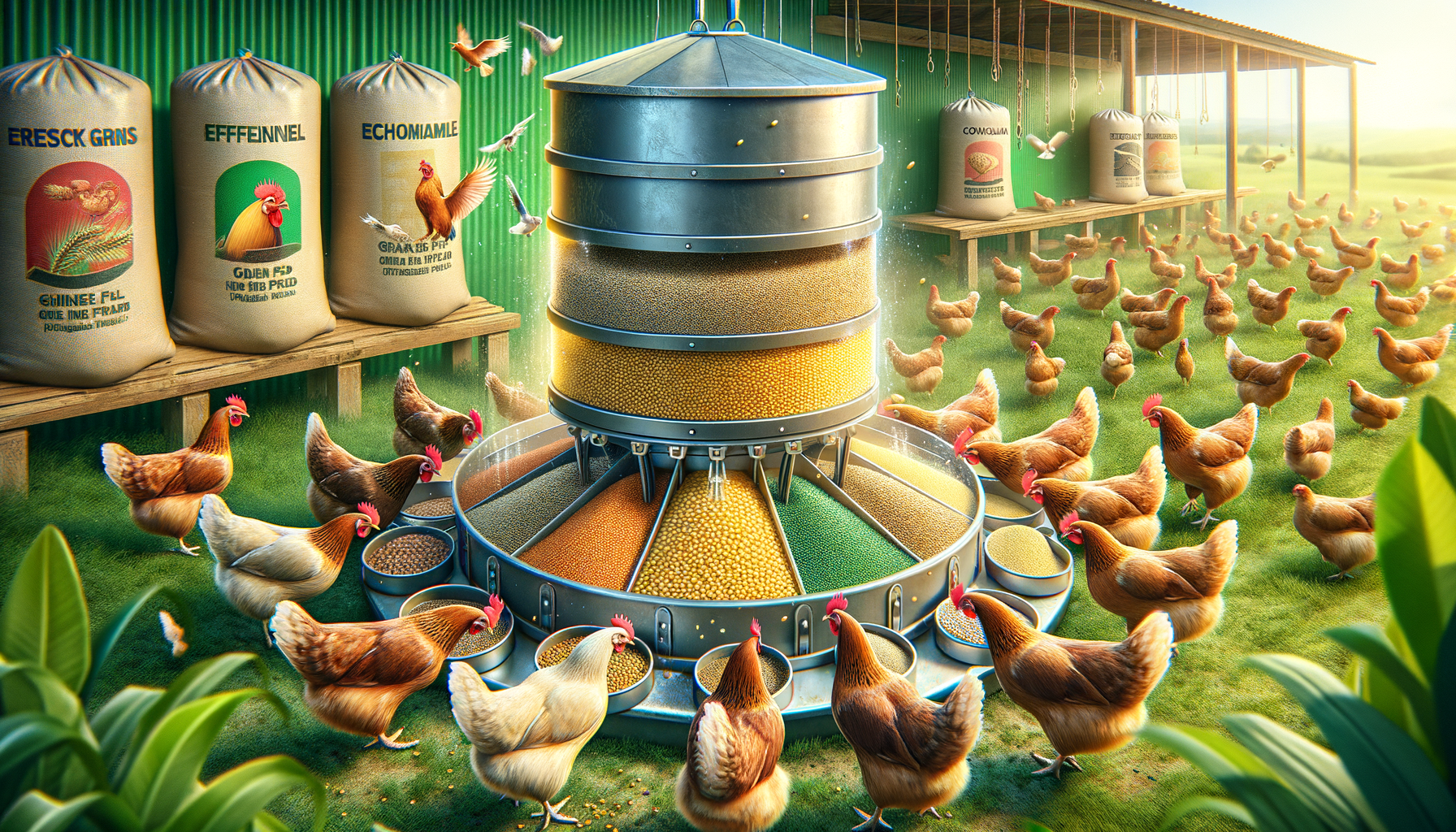
Unlock the Secrets of Cost-Effective, Nutritious Chicken Feed: Your Guide to Proper Flock Nutrition
Understanding Chicken Nutritional Needs
Before delving into strategies for economical feeding, it’s pivotal to understand the nutritional requirements of chickens. Chickens, like all animals, need a balanced diet to thrive. Their diet should include protein, carbohydrates, fats, vitamins, and minerals. Protein is particularly crucial for growth and egg production. For instance, a laying hen requires around 16-18% protein in its diet, while broilers need approximately 20-24% during their growth phase. Carbohydrates provide energy, and grains are a typical source. Fats are essential for energy and the absorption of fat-soluble vitamins. Vitamins and minerals, though needed in smaller quantities, are vital for metabolic processes and egg production. Calcium, for example, is essential for eggshell formation, while phosphorus is important for bone health. By understanding these basics, poultry owners can ensure their chickens receive a diet that fulfills these needs without unnecessary expenses.
Utilizing Kitchen Scraps as Feed
One effective way to reduce feed costs is by incorporating kitchen scraps into your chickens’ diet. Chickens are natural foragers and can benefit from a variety of household leftovers. Suitable scraps include vegetable peels, fruit cores, and stale bread. However, it’s important to avoid feeding them anything too salty, sugary, or spoiled, as these can harm their health. By using kitchen scraps wisely, not only can you cut down on feed expenses, but you also contribute to reducing household waste. It’s a win-win situation for both the environment and your wallet. Additionally, chickens enjoy the variety that scraps provide, which can lead to happier and healthier birds. When implementing this strategy, ensure that scraps are given in moderation, complementing rather than replacing their balanced feed.
Growing Your Own Chicken Feed
If you have the space, growing your own chicken feed can be an economical and sustainable option. Grains such as corn, wheat, and barley are relatively easy to cultivate and can significantly reduce feed costs. Additionally, planting legumes like peas and beans can provide a rich source of protein. Another excellent option is to grow fodder, which involves sprouting seeds like barley or oats. Fodder is highly nutritious and can be grown indoors with minimal resources. This method not only saves money but also ensures your chickens receive fresh, pesticide-free feed. By dedicating a small portion of your garden to feed crops, you can create a self-sustaining cycle that benefits both your chickens and your budget.
Purchasing Feed in Bulk
Buying chicken feed in bulk is another strategy to save money while ensuring your flock’s nutritional needs are met. Bulk purchasing often comes with significant discounts, making it a cost-effective choice for poultry owners. When choosing this option, it’s crucial to store the feed properly to prevent spoilage. Feed should be kept in a cool, dry place, ideally in airtight containers to deter pests. Additionally, forming a co-op with other local poultry owners can further reduce costs, as larger quantities can be purchased at even greater discounts. By collaborating with others, you can share resources and knowledge, creating a community of support and savings.
Exploring Alternative Protein Sources
Protein is a vital component of a chicken’s diet, and exploring alternative sources can be both economical and nutritious. Insects, for instance, are a natural part of a chicken’s diet and can be easily cultivated. Mealworms and black soldier fly larvae are particularly high in protein and can be raised at home with minimal effort. Another option is to use fish meal or soybean meal, which are both excellent protein sources. However, it’s essential to ensure that any alternative protein source is safe and free from contaminants. By diversifying protein sources, poultry owners can reduce dependency on commercial feeds and provide a varied diet that supports optimal health and productivity.

